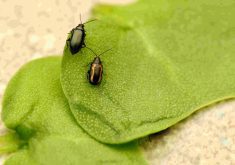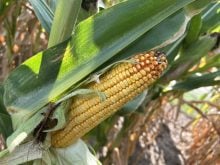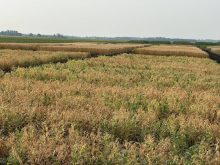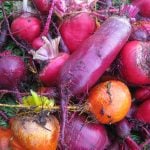Fruit growers in Manitoba are being warned to control spotted wing drosophila before the pests affect potential profits.
Populations of spotted wing drosophila have boomed this year, according to Manitoba Agriculture’s July 16 Fruit Crop Report. Infestations have been detected across all harvested fruit crops, including strawberries, saskatoons and sour cherries, and they’re also showing up in raspberries.
Why it matters: The fruit flies, native to southeast Asia, lay their eggs inside thin-skinned fruit, infesting it with larvae and making it soft and unmarketable.
Read Also

Prairie spring wheat looks like a bumper crop
Canada will likely set a new record for spring wheat yields this year, topping the previous mark of 54.1 bushels an acre set in 2020.
Fruit farms had only minor problems with the fruit flies last year, said Anthony Mintenko, fruit crop specialist with Manitoba Agriculture, because they don’t thrive in hot, dry weather. This year, temperatures from 20-30 C provided better conditions for the pest.
Henry Schellenberg, owner of Berry Hill Farm near Altona, confirmed that he’s dealing with drosophila this year, but he’s not too worried.
“I have noticed them. We have them every year. I spray pesticide on it. I spray for them once a week.”
Management
Berries are vulnerable once they begin to show colour, and remain vulnerable until harvest.
Eggs hatch in about three days and larvae begin eating fruit from the inside. The transformation to adult takes anywhere from six to 28 days.
The management window starts once fruit enters the vulnerable stage and the fruit flies move into the crop. Populations are likely to increase during warm, moist weather.
Producers should monitor presence using traps or the saltwater test method, in which fruit is placed in a saltwater solution and mashed lightly to break the skin. If infested, larvae will float to the surface.
“To detect very small larvae, you will need a hand lens and good lighting,” reads a fact sheet from Ontario’s agriculture ministry. “Look for small, white larvae, tapered at both ends, and 1-4 mm in length.
“It is impossible to distinguish (spotted wing) from other drosophila larvae at this stage; however only SWD attack sound, marketable fruit. If you are using ripe, not overripe, fruit in the tests, emerging larvae are probably SWD.”
Manitoba Agriculture noted saltwater tests can be used to monitor infestation levels. Apple cider vinegar traps can indicate whether the flies are in the field.
Numerous chemical control options are available. Experts urge producers to rotate between chemical groups every five to 10 days to prevent development of resistance.
If treating, Manitoba Agriculture advises a temporary halt to harvest. Chemical controls come with a pre-harvest interval of one to two days. For best results, products should be applied at dawn or dusk.
Weekly applications of approved insecticides are highly effective in managing spotted wing drosophila and safeguarding the berry yield from damage, the province said.
Ripe berries should be harvested often and promptly chilled. The pests stop developing and die at cooler temperatures. Unmarketable fruit should be disposed of by crushing it in designated areas.
As long as producers spray and harvest often, they should be able to stay ahead of major economic losses, Mintenko said.
















